Product
March 17, 2025 / 5 minute read
How to Install ADS Nyloplast Drain Basins: A Comprehensive Guide
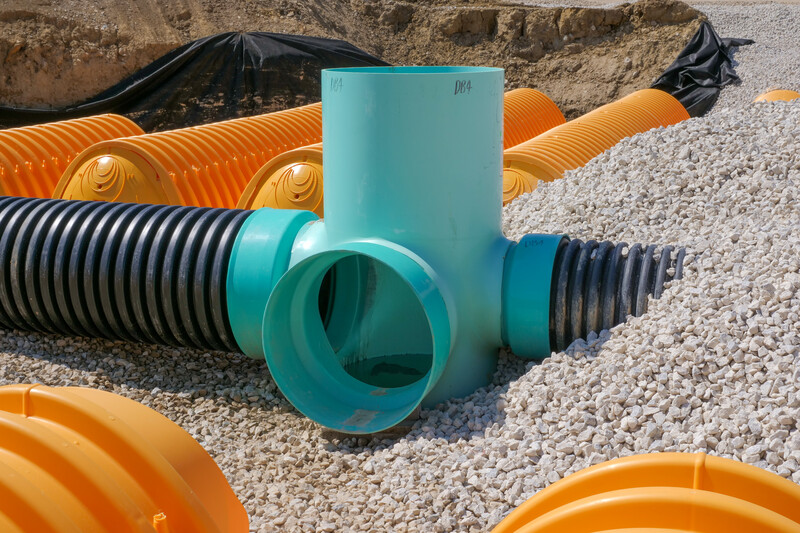
Effective drainage systems are vital for stormwater management. They prevent flooding, protect water quality, and support sustainable development. One essential component of these systems is the catch basin, designed to collect and transport rainwater or snowmelt. If your area experiences frequent rain, runoff, or flash floods, installing a catch basin can save valuable landscape elements from water damage.
ADS Nyloplast Drain Basins are among the best in the industry. These custom-made basins feature ductile iron grates and robust PVC construction. Below is an outline of the steps required to install ADS Nyloplast Drain Basins.
Materials Needed
- ADS Nyloplast Drain Basin
- ASTM F477 gaskets
- Lubricant for gaskets
- HDPE/PP corrugated pipe
- Class I, II, or III backfill material
- Stone base material
- Concrete (if required for load ratings)
- Leveling tools
- Excavation equipment
- Compacting tools
Before installation
- Site and Optimal Condition Assessment: Conduct a thorough assessment of the installation site and plan ahead for weather events. Avoid installation during heavy rain or when the ground is overly wet. Ensure the location is suitable for drainage and consider factors such as soil type, water table level, and existing infrastructure.
- Design Specifications: Follow the project engineer’s design specifications closely. This includes the depth and width of the excavation, the type of backfill material, and any additional requirements for load ratings.
- Safety Precautions: Always prioritize safety. Wear appropriate personal protective equipment (PPE) and ensure that all equipment used for excavation and installation are in good-working condition.
- Permits and Regulations: Ensure that you have obtained all necessary permits and are following local regulations regarding stormwater management and construction.
Understanding Nyloplast Drain Basins
Nyloplast Drain Basins are known for their corrosion resistance, fast installation, and low installed costs compared to traditional concrete or brick-and-mortar basins. They are lighter, safer to handle, and require less storage space on construction sites.
These basins meet National Pollution Discharge Elimination System (NPDES) and EPA Phase 2 standards, improving water quality through various inserts and inlet protection devices. They serve as collection points where drain lines converge, facilitating transitions between different pipe sizes and types. Plus, they allow for easy adjustments to match actual site elevations with riser sections in various sizes.
Step-by-Step Installation Process
1: Excavation
Start by excavating the drain basin location to the proper depth and width, as specified by the project engineer. Add a stone base. The excavation width can match the pipe trench width, due to the size-on-size pipe-to-structure connections allowed by Nyloplast Drain Basins. Be mindful of potential rocks and debris that could interfere with the installation. Make sure the excavation area is clean and stable: providing a solid foundation for the basin.
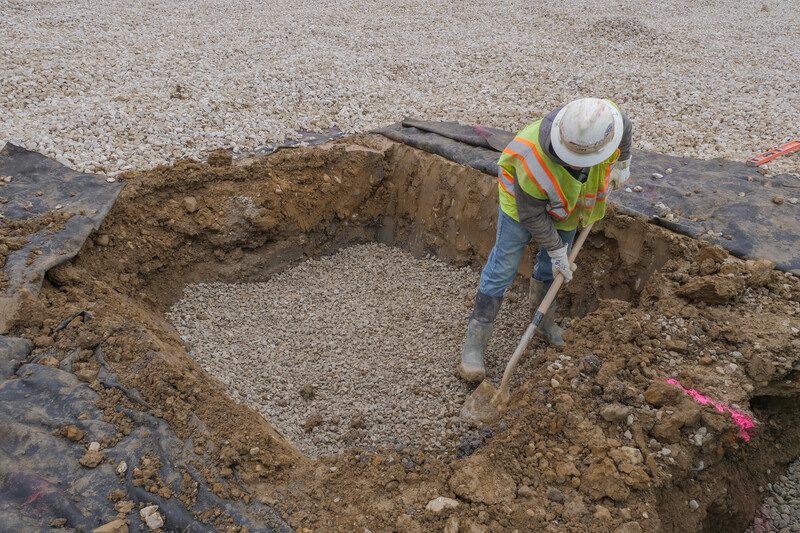
2: Setting the Drain Basin
Place the Nyloplast Drain Basin in the excavated area and level it. Ensuring the basin is level is crucial for the installation’s effectiveness and longevity. Double-check the level from different angles to avoid future adjustments. It's important to use a reliable level tool and take the time to ensure precision, as an uneven basin can cause drainage issues.
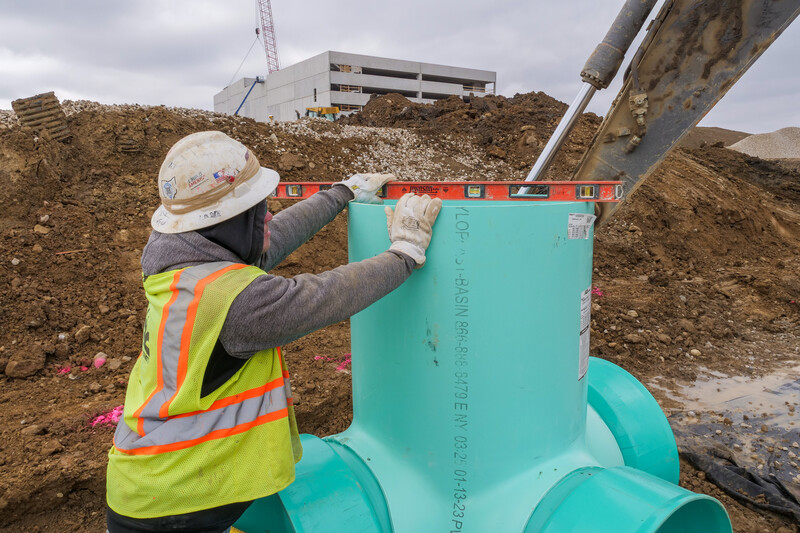
3: Installing the Gasket
Install the provided ASTM F477 gasket for HDPE/PP corrugated pipe into the last corrugation of the plain end pipe. Lubricate the gasketed pipe and the inside of the drain basin bell for a secure connection. Do not over-lubricate, as this could compromise the seal. Check that the gasket is seated properly: preventing leaks and ensuring a tight fit.
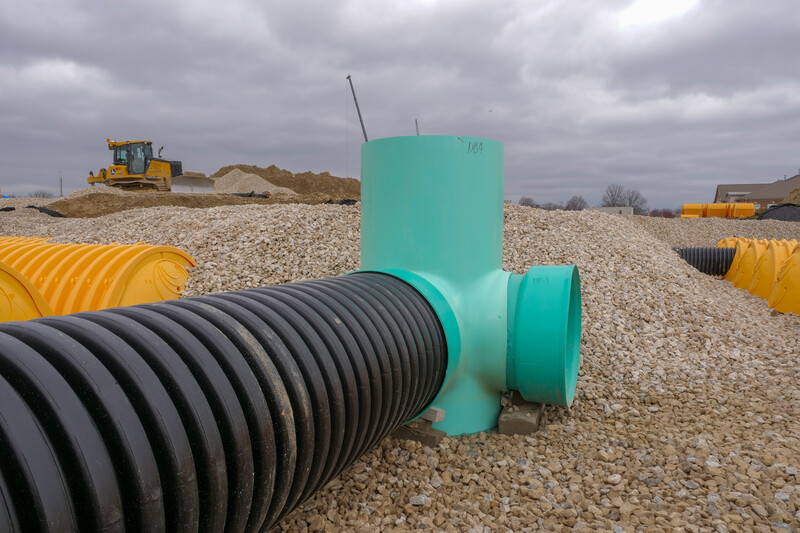
4: Backfilling and Connecting the Pipe
Backfill the back side of the structure and push the pipe into the basin until it seats properly. Re-check the drain basin depth, level, and position to ensure accuracy. Be mindful of the surrounding soil conditions, as uneven settling can affect the installation. Take care to ensure the pipe connections are tight and secure to prevent future dislodgement or leaks.
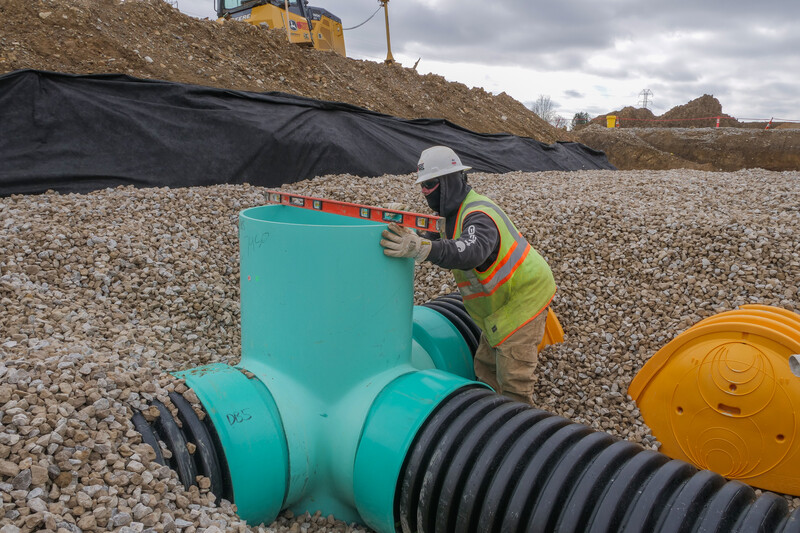
5: Uniform Backfilling
Backfill uniformly around the structure with class I, II, or III material, and compact in lifts according to ASTM D2321. Proper backfilling is essential to maintain the integrity and stability of the installation. Watch out for air pockets and voids ensuring each layer of backfill is well-compacted providing strong support for the basin and connected pipes as not filling compactly could lead to future settling issues.
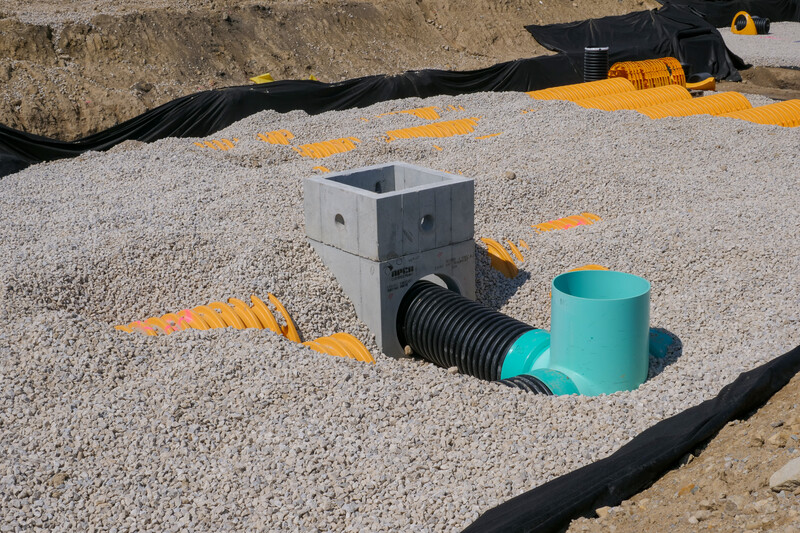
6: Final Adjustments
Cut the drain basin body at the final grade or raise it with a riser as needed. No additional brick, stone, or concrete blocks are required to set the grate to the final grade height. For installations requiring H-20 or heavier load ratings, set the elevation of the frame and grate, then pour a concrete collar around and knife concrete under the edges to support the frame. Make sure the concrete is evenly distributed to avoid any weak points. Double-check all measurements and alignments to guarantee the grate fits securely.

Advantages of Nyloplast Drain Basins
- Corrosion Resistance: The PVC construction resists corrosion better than concrete or brick and mortar.
- Ease of Installation: These basins install 3-4 times faster than traditional structures without the need for additional grout work or curing time.
- Field Adjustability: They can be easily adjusted on-site to match actual elevations, saving time and resources.
- Versatility: With options like the ADS Inserta Tee and Flexstorm filters, Nyloplast structures can be customized for various applications, ensuring watertight performance and maximum protection at a favorable cost.
Installing ADS Nyloplast Drain Basins is straightforward and offers significant benefits in stormwater management. Investing in Nyloplast Drain Basins means choosing a resilient and efficient solution that meets the demands of modern stormwater management.
Follow the outlined steps to ensure a successful installation that enhances flood mitigation, water quality, and sustainability efforts. For further assistance or to discuss specific project requirements, contact your local ADS representative at 1-800-821-6710 or submit a contact form online.
